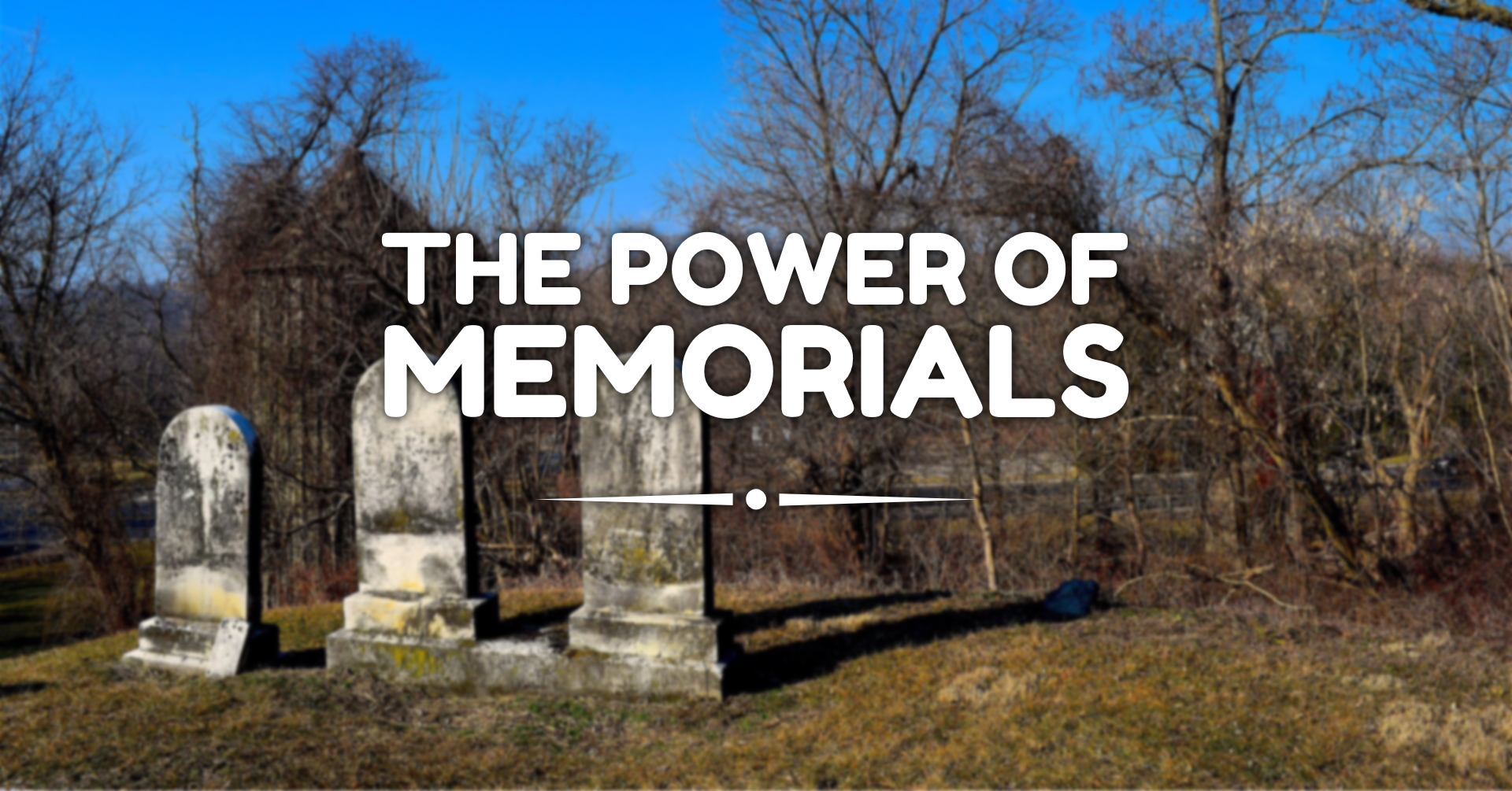We generally understand how powerful memorials can be. We create memorials for those who have died in war, for the victims of the 9/11 attacks on American soil, and for other events that are intended to be remembered and understood for future generations. In fact, every tombstone is a memorial to a life that was meaningful to a friend, a family, or a nation. We cherish our memorials. We protect them. We expect people to respect them and act appropriately when they are being observed. This is one of the high marks of honor.
God made memorials to be an integral part of the life of Israel. The Passover served as a memorial to the power of God in bringing the children of Israel out of Egypt (Exod 12). The writings were intended to serve as a memorial to these great events (Exod 17:14). The stones on the Ephod of Aaron were memorial stones (Exod 28:12). The names of the sons of Israel were placed in the “breastpiece of judgment” over the heart of Aaron as he entered the holy place “for a memorial before the Lord continually” (Exod 28:29). Even the shoulder pieces of the ephod were engraved “according to the names of the sons of Israel” as memorial stones (Exod 39:6-7).
Much of what the priesthood did were intended to be understood as memorials. The offerings and sacrifices were thusly considered (Lev 2:2, 9, 16; 5:12; 6:15; 24:7; Num 5:15, 18, 26). Memorial stones were set up as they crossed the Jordan into the Promised Land so that future generations would remember the events (Josh 4). Again, memorials were a vital part of their lives, and problems that came upon them were due in part to their forgetting what these memorials were meant to represent. Notice that memorials were not just given as something to think about, but were often accompanied with actions. By engaging in an action (e.g., eating the Passover), they were engraining the memory even deeper into their thoughts and hearts.
Memorials are no less a part of the New Testament teachings as well. Christians should immediately recognize the Lord’s Supper as such a memorial. “Do this in remembrance of Me,” said Jesus. By taking the Lord’s Supper, we recall His death, the blood shed on our behalf for the forgiveness of sins. We also look forward to His coming (1 Cor 11:25-26), which implies His resurrection to sit on the throne of His kingdom. Like earlier memorials, the Lord’s Supper is accompanied by action. Sometimes people focus on the amount of bread or fruit of the vine. Some even mock the amount if it is only a little. Yet all this misses the point. It’s not about the amount; it’s about an action that serves as a memorial. We are taking in His body and blood, so to speak, and there is no indication as to how much is to be taken. Yet that does not change the memorial nature of the action. It is a physical reminder, an action that is meant to make us think even deeper about the sacrifice of our Lord. By focusing on amounts, we are making it more about us and less about Him. But by focusing on Him, we realize that the action is commemorating that sacrifice.
Memory can be tricky, to be sure, and perhaps this is one reason why a memorial should be protected for what it was meant to be. By changing the nature of the memorial, we change what we think about that event. Over time, the event itself could even lose meaning if we focus merely on the physical actions or monuments. The actions and monuments are nothing, however, unless the event itself is properly understood and recalled. Of course, we should understand than any particular memorial is not itself an idol to be worshipped. It is a symbol that helps us remember the significance of the event that underlies it.
Critics sometimes argue that the stories of Jesus were merely legends that grew up over a period of time. However, the memorials help demonstrate this to be foundationally faulty. Paul wrote 1 Corinthians within about 20 years of the death of Jesus, and he knew exactly what Jesus said about that memorial—a memorial that had been practiced non-stop to the time of Paul’s writing. It was meant to continue on until Jesus comes. That amount of time (20-25 years) isn’t that long when an important event is being commemorated.
Those who have given their lives for a nation are often memorialized for their great sacrifice. This is a way of keeping their lives before us and not forgetting why they did what they did. In America, the tragedy of 9/11/2001 remains a fresh memory for many; those who are old enough remember that day vividly. The nation changed on that day, and we continue to pray and remember those who lost their lives. Vivid memories stay with us when something important happens. We remember well our wedding days, the days our children were born, and other significant events in our lives. We are expected to remember and observe those days as meaningful (e.g., anniversaries, birthdays, etc.).
The disciples would never forget the day they saw Jesus alive again after He died. They would commemorate these events through their teaching, and every week through the memorial set up by Jesus Himself. That memorial was to be protected (as Paul shows in 1 Cor 11), and the events of those days would not be forgotten. They were not made up later. They were remembered for what they were, and we remember it still.
May we keep our memories sharp through proper observances of our memorials. Most importantly, may we remember our Lord Jesus for His loving sacrifice and resurrection.
Doy Moyer
